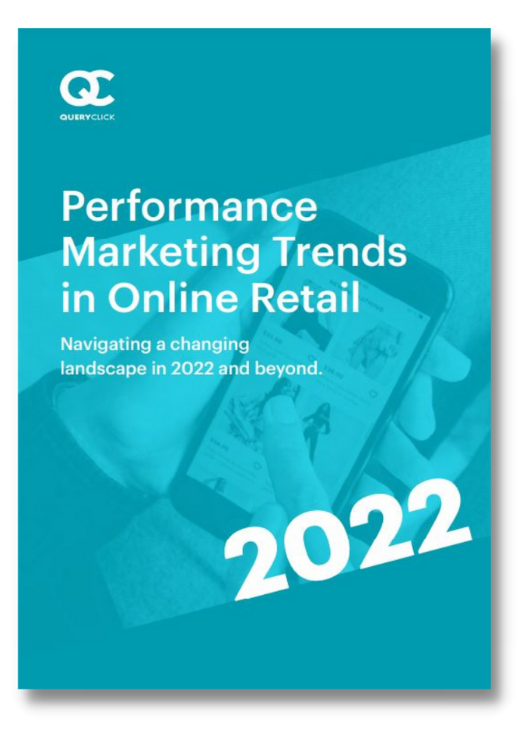What The Death Of Third-Party Cookies Means For Retailers

It isn’t an understatement to say that retail marketers have faced an unprecedented range of challenges recently.
As they have been asked to navigate issues ranging from overnight changes in buying behaviour – due to the pandemic – to radical adjustments by key industry players, like Apple and Google, to the way that established models of tracking will work going forward.
One of the key changes looming is the end of third-party cookies. Cookies have been a part of the digital landscape for an eternity (or at least in the digital marketing sense).
You could argue that the death of the third-party cookie itself started when Firefox announced back in 2019 that it would block them by default for users of its web browser.
But it was confirmation by Google that it would begin phasing out third-party cookies from Chrome browsers by 2022 – and the recent changes by Apple around iOS14 – that have really given the change unstoppable momentum.
In our Performance Marketing Trends in Online Retail survey – we wanted to really dig into how retail marketers viewed the change and the likely impact on their businesses.
Here is what they told us.
Retailers need clarity on a what a cookieless world will look like
First up, it is heartening to see that 62% of survey respondents say that they have a strategy in place for the removal of cookies – but it’s actually a stat that doesn’t chime with our experience with clients and in the marketplace.
Engaging with CMOs on a regular basis, the main theme we hear for a replacement strategy is an acceptance that aspects of marketing that require third-party cookies to activate will be removed from their mix and replaced with alternative systems that they expect to see from Google – who had proposed FloC – Federated Learning of Cohorts.
Though Google themselves have recently advised that they acknowledge that FloC would not be workable from a competition regulatory perspective or compliant with GDPR in the EU.
They have also suggested that the marketplace should look to propose another solution – which experts in web standards and legal compliance deem as unlikely to be achieved in any near timeframe.
The other thread we observe is a lack of solutions to effectively ‘activate’ first-party data when third-party is removed. A replacement of third-party strategy entirely is in effect required to be sure of a robust solution before the end of 2022.
At QueryClick, we have a clear and robust strategy for activating first-party data and building a new customer acquisition pipeline effectively.
In a tailored way, that uses no cookies at all and including no 1st party cookies – which undermine the quality of web analytics data in Adobe and GA360 and GA4. Making them accurate only 20% of the time in our data quality studies.
An acceptance that third-party data has long had issues with effectiveness in the long tail of content that exists in the web is required to build these new, forward thinking strategies. For example, the industry has known since 2019 that third-party data has to be premium inventory to have any incremental value at all.
Essentially incrementality from third-party data comes with data that is 2.5x the cost of the display ad placement, or 1.5x the cost of a video placement.

Download a copy of the full Performance Marketing trends in Online Retail survey report which includes:

- “State of play” assessment of retail marketing
- Post pandemic trends that are influencing strategy
- Trends in SEO and social for retailers
- Impact of the death of the third-party cookie and iOS14
Retailers have mixed views on the business impact of the removal of cookies
The core of the response to this question is interesting with 34% indicating that the impact of removing third-party cookies is likely to be a negative one.
That could be for a range of reasons from a lack of preparedness for the change itself, to an over reliance on cookies in the marketing mix, to a straight lack of understanding of the implications themselves.

But we are firmly in the camp of the 44% that think that change will have a positive outcome for them – in fact joint research by LiveRamp and Censuswide (who also worked with us on this study) suggests that as many as 78% of UK Senior Marketers believe removing cookies will have a positive impact on advertising strategies.
We also see it as a great opportunity to break free of the shackles of a mechanism that has consistently shown to be not fit for purpose. And our work with clients would tend to bear out the benefits.
In the example below – for a leading UK food and clothing retailer – QueryClick was able to use its attribution solution, Corvidae, and take existing Google 360 data and effectively rebuild it to repair the broken sessions caused by the inefficiencies in third-party cookies. And adjust the level of attributable spend from £4.1m to £13.6m in the process.

So, rebuilding your core data was always foundational.
In truth, the removal of third-party cookies is just highlighting an issue we have been working on for clients for a number of years now!
5 key tips for surviving the third-party cookie apocalypse
For us, there are 5 key tips for surviving the third-party cookie “apocalypse” as follows:
- Tip 1 – Context is king, so wherever possible you should be using contextual targeting (if you are not already!).
- Tip 2 – Maximize the value of first-party audiences and data – as Forbes point out it’s actually preferable if you can lay your hands on it!
- Tip 3 – Analyse and rebuild your broken cookie data – because it is pretty well documented they actually do a pretty poor job of tracking cross-device, complex customer journeys anyway. With up to 80% of your data being incorrectly attributed.
- Tip 4 – Solve your attribution issue as an urgent priority – the problem runs wider and deeper than third-party cookies with AdTech silos and issues with platform measurement muddying the waters.
- Tip 5 – Don’t leave any of this too late – if you are in the 34% of survey respondents that say they don’t have a strategy in place (which incidentally rises to 53% for both Ecommerce Directors and Heads of Analytics) then you might want to place it on your priority list.
It is clear from our survey that finding an effective solution to the death of third-party cookies is a key challenge facing retail marketers this year.
But, alongside, they also have other priorities on their radar including maximising the upside in retail commerce, dealing with the competitive threat from online marketplaces, successfully navigating the impact of iOS14 and getting a clear view of the ROI of new channels adopted in response to what his a highly disrupted environment post pandemic.
To get the full picture, download a copy of our Performance Marketing Trends in Online Retail survey below.
Performance Marketing Trends in Online Retail
Download the full 2022 report.
Own your marketing data & simplify your tech stack.
Have you read?
Chrome’s announcement on dropping cookie opt-in last month closed the door on a 5 year saga for marketers. But what is the landscape like in 2025 for cookie-based measurement?
Generative AI is transforming the way that marketers plan and assemble content for their Paid Ads. As big platforms like Google, Meta and TikTok increasingly build the tools needed to...
In a surprising move that has sparked heated debate, Mark Zuckerberg announced on his Instagram that Meta will be reducing its levels of censorship and in particular fact-checking on its...






